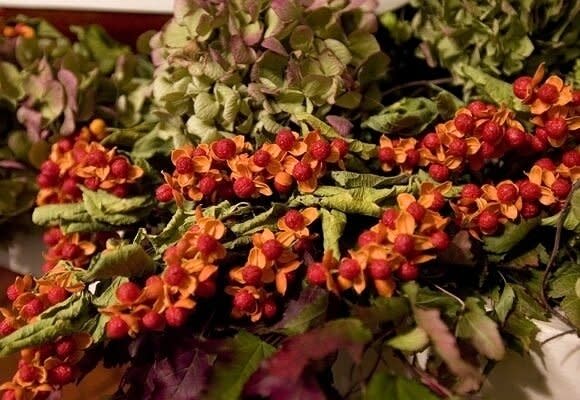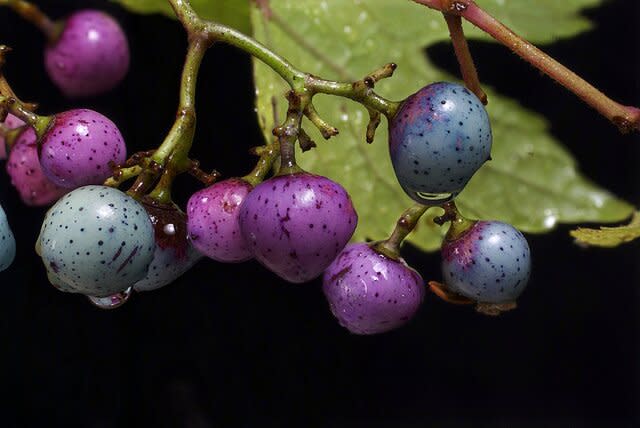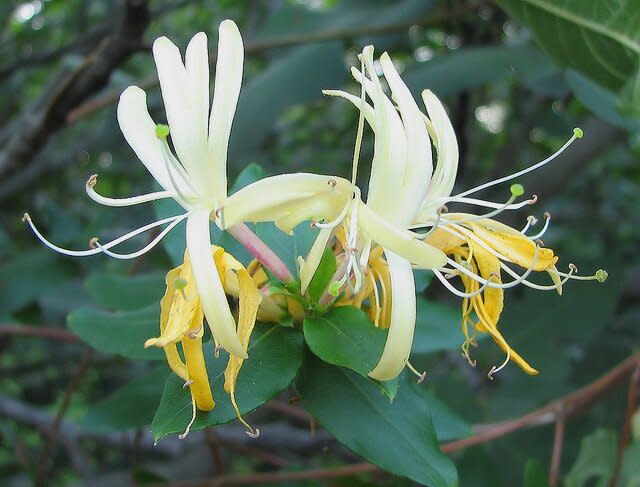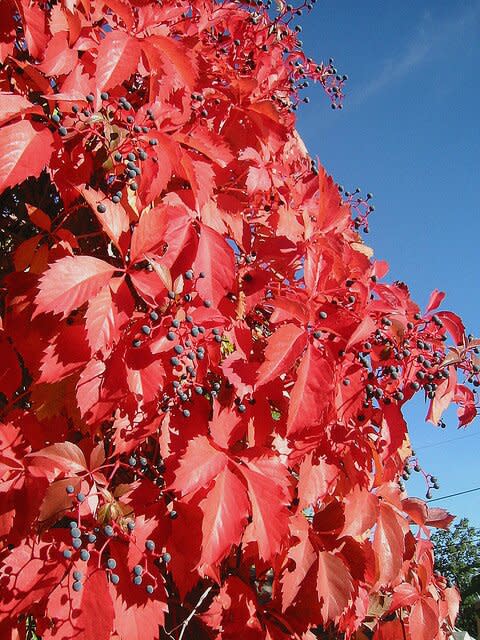Five Monster Vines You Must Never Plant
Vines can be beautiful additions to the garden, but some of them are rampaging monsters. Here are five vines you should NEVER plant if you value your home, your environment, and your sleeping cat.

Trust me -- this isn't a good idea. Photo: Ralph Anderson
Monster Vine #1: Japanese or Chinese Wisteria I know, I know—wisteria in bloom is just so beautiful. It's deliciously fragrant, too. How could Grumpy be so boorish to label it a monster? Because I've seen what both of these Asian species, Wisteria floribunda and Wisteria sinensis, can do. Tear off gutters. Bend iron railings. Strangle trees. Smother entire hillsides. See that house up there? If the owners don't have professionals equipped with 40-foot ladders prune those vines about every two weeks, the house's sides will soon look like crackers crumbled up on your soup.
Asian wisterias spread by seed, runners, and suckers. They'll grow as tall as whatever they're growing on. So if they get loose in your yard, watch out. The only way I know how to kill one is to cut through the trunk and paint the cut end with Brush-Killer. Fortunately, there is a nice, friendly, native wisteria you can plant — American wisteria (Wisteria frutescens). Unlike its cousin, it's well-behaved and doesn't destroy things. Look for a selection called Amethyst Falls at the garden center.

emAn end to this vine will NOT be bittersweet. Photo: Luke McCoy/em
Monster Vine #2: Oriental Bittersweet I keep urging our editor at Southern Living not to run holiday photos of bittersweet wreaths on doors, bittersweet boughs on mantels, bittersweet branches on gates, and bittersweet draped around pumpkins, but so far no luck. Its bright-red seeds and yellow seed capsules make such a pretty picture! How could something so pretty be evil?
Easy. Unlike our relatively tame native American bittersweet (Celastrus scandens), Oriental bittersweet (Celastrus orbiculatus) is a thug. Birds eat the seeds and spread them everywhere. Suckers from the roots shoot up yards from the original plant. Its thick, sinewy branches throttle small trees and climb as far as they can reach. If you buy a bittersweet wreath for the holidays, please seal it inside a plastic trash bag when you're through with it and put it out with the trash. To kill an Oriental bittersweet growing in your yard, treat it as recommended for wisteria.

emPorcelain berry proves you can have too much of a good thing. Photo: magnolia 1000/em
Monster Vine #3: Porcelain Berry I remember the first time I saw porcelain berry (Ampelopsis brevipedunculata) in my woody ornamentals class in college. I was awestruck. Berries start out yellow, progress to pale lilac, then purple, and finally end up bright blue. Often all four colors are present in the same cluster. Whoa.
Whoa is me and you. For you see, as with bittersweet, birds love the berries of this ornamental grape from Asia. They gobble them all, poop out the seeds, and every seed germinates. With its thin, pliable stems, porcelain berry doesn't crush structures or plants. But I've seen it draping 60-foot trees in Pennsylvania. It's the kudzu of the North.

emIf you haven't sucked the nectar from honeysuckle blooms, you haven't lived. Photo: melissa/em
Monster Vine #4: Japanese Honeysuckle Few childhood memories are as sweet as the scent of honeysuckle blooms or the single drop of nectar stolen from each flower. Japanese honeysuckle (Lonicera japonica) would be a treasure if only it would stay put. But it won't.
Originally sold as ornamentals by East Coast nurseries, Japanese honeysuckle can now be found growing wild in over three-quarters of the U.S. This fast-growing, twining vine spreads by berries eaten by birds. It turns woodlands into impenetrable thickets. In high-rainfall areas like the Southeast, it's nearly impossible to eradicate. I consider Chinese privet (Ligustrum sinsense), kudzu, and Japanese Honeysuckle to be the South's three worst landscape weeds.

emVirginia creeper -- pretty, but sneaky. Photo: JBColorado/em
Monster Vine #5: Virginia Creeper So far, all of the monster vines have been alien invaders. Now it's time to put the hurt on one of our own — our native Virginia creeper (Parthenocissus quinquefolia). This vine doesn't twine, but uses small, root-like tendrils to climb straight up anything—bark, steel, concrete, chain-link fences, PVC. Anything. And it grows fast.
I knows it's not PC to criticize native plants whose pretty berries provide food for birds (notice the pattern here?), but I'm growing to hate this vine. Seedlings sprout everywhere in my yard, runners tunnel below the soil and come up 20 feet away, and the vines get on everything. Virginia creeper's one redeeming virtue is its brilliant red fall foliage. But that ain't enough. Get it outta here!

